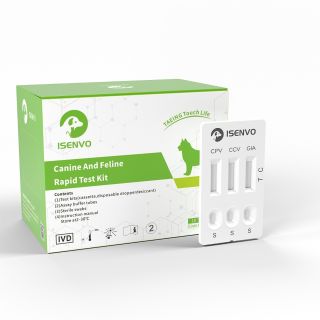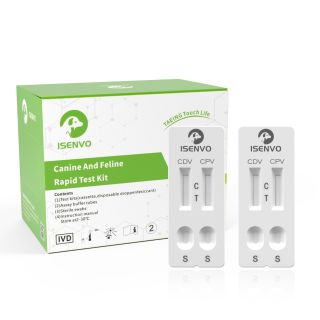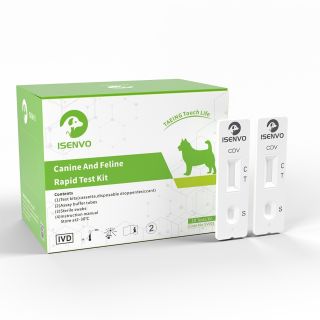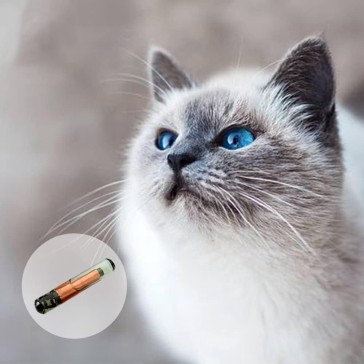Canine Parvovirus (CPV) and Canine Distemper Virus (CDV) are among the most contagious and dangerous viral diseases in dogs, especially affecting puppies and unvaccinated dogs. Early detection is essential to ensure timely veterinary care and improve recovery chances. Understanding the symptoms and having access to fast, reliable home testing can help dog owners protect their beloved pets from these serious infections.
1. What Are CPV and CDV?
CPV and CDV are highly contagious viruses that target a dog’s immune system and vital organs, leading to severe illness. Their characteristics include:
✔ Highly infectious: Spread through direct contact with infected dogs, feces, bodily fluids, or contaminated environments
✔ Rapid progression: Symptoms can worsen quickly without treatment
✔ High mortality risk: Especially in young puppies or immunocompromised dogs
✔ Contagious during incubation and illness phases: Dogs can spread the virus even before symptoms appear
2. How to Detect CPV and CDV Early?
Early recognition of symptoms allows for prompt intervention, which is critical for survival.
Common Signs of Canine Parvovirus (CPV):
Severe, often bloody diarrhea
Vomiting
Loss of appetite
Lethargy and weakness
Fever
Common Signs of Canine Distemper Virus (CDV):
Nasal and eye discharge
Coughing and breathing difficulty
Fever
Neurological symptoms such as seizures or twitching
Thickened footpads or skin rash
⚠ Warning: If your dog shows severe vomiting, dehydration, difficulty breathing, or neurological signs, seek immediate veterinary care.
3. How Can Rapid Home Testing Help?
Using a rapid Isenvo CPV+CDV combo test kit at home provides:
Fast results in 10-15 minutes
Easy sample collection (feces or blood)
Simultaneous detection of both viruses
Early indication of infection, enabling timely vet visits
How to use the test kit:
Collect a small fresh fecal or blood sample as per instructions.
Add the sample and buffer solution to the test device.
Wait 10-15 minutes for the result.
Interpret the results:
Two lines: Positive for CPV or CDV
One control line only: Negative
No control line: Invalid test, repeat testing
4. Preventing CPV and CDV Scientifically
1. Vaccination—The Most Effective Defense
Puppies: Begin vaccination at 6-8 weeks, with boosters every 3-4 weeks until at least 16 weeks old
Adult dogs: Annual or triennial boosters according to veterinary guidance
2. Good Hygiene Practices
Regularly clean and disinfect your dog’s environment
Quarantine new or sick dogs before introducing them to others
3. Boosting Your Dog’s Immunity
Provide balanced nutrition and clean water
Maintain parasite control
Reduce stress factors to support immune health
5. What to Do If Your Dog Tests Positive?
There is no direct cure for CPV or CDV, but supportive care greatly increases chances of recovery:
✔ Veterinary hospitalization for fluid therapy and nutritional support
✔ Antibiotics to prevent secondary infections
✔ Symptom management including anti-nausea medication and pain relief
✔ Close monitoring and supportive environment
⚠ Important: Isolate infected dogs to prevent spreading. Contact your vet immediately if your dog tests positive or shows symptoms.
6. Summary: Key Strategies for Protecting Your Dog
Recognize early symptoms of CPV and CDV
Use rapid home tests for quick screening
Follow vaccination schedules strictly
Maintain cleanliness and proper isolation procedures
Support your dog’s overall health and immunity
Seek veterinary help promptly if infection is suspected
With early detection and proper care, these dangerous viral diseases can be managed effectively. A vigilant and informed owner is your dog’s best defense!













Validate your login